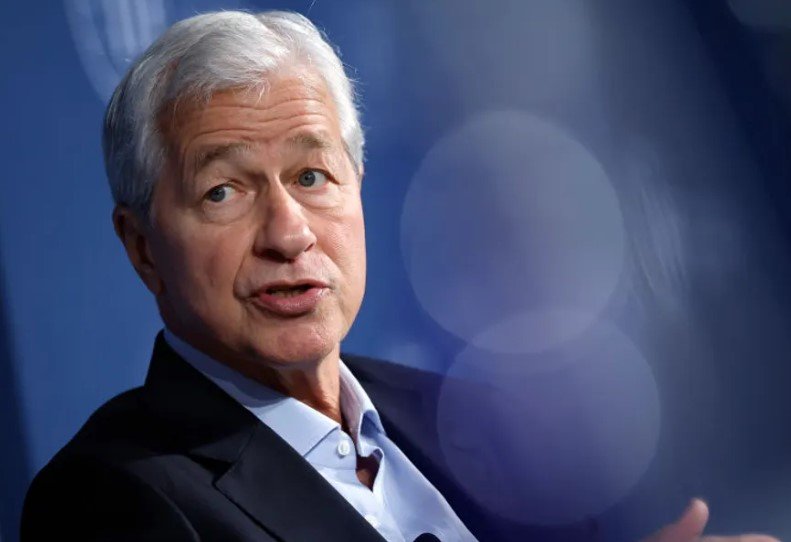Jamie Dimon, the CEO of JPMorgan Chase, stated that the Federal Reserve may struggle to lower interest rates further unless inflation falls below 3 percent. In a recent interview, he expressed little concern over stablecoins challenging traditional banks, while highlighting ongoing economic uncertainties as of September 2025.
Dimon’s Views on Inflation and Rate Cuts
Dimon shared his thoughts during an interview on CNBC-TV18, pointing out that inflation remains stuck around 3 percent. He argued this level makes it tough for the Fed to implement more cuts without risking economic stability.
Recent data supports his caution. The latest US inflation report from August showed a 0.4 percent monthly rise, leading to a 2.9 percent annual increase, still above the Fed’s 2 percent target. This comes after the Fed’s first rate cut of 2025 by 0.25 percent in September, aimed at boosting growth amid signs of a slowing economy.
Dimon hopes for steady growth rather than cuts driven by recession fears. He noted factors like tariffs and global trade tensions could push inflation higher, not lower.
Market watchers expect possibly two more cuts by year-end, based on Fed projections and tools like CME FedWatch. However, Dimon warned that sticky inflation might force the Fed to hold steady or even consider hikes if pressures build.

Economic Outlook and Weakening Signals
Dimon has repeatedly flagged a cloudy US economic picture. He believes full impacts from tariffs, geopolitical issues, and policy shifts are yet to hit, potentially leading to stormier times ahead.
Labor data revisions earlier this month cut job addition estimates by over 800,000, confirming Dimon’s view of a weakening economy. Despite this, he sees room for decent growth if inflation eases.
In July 2025, Dimon highlighted markets underestimating the risk of higher rates due to ongoing inflationary forces. This aligns with his long-standing cautious stance, even as JPMorgan thrives.
Key economic indicators as of September 2025 include:
- Unemployment rate at 4.2 percent, up slightly from earlier in the year.
- GDP growth projected at 2.5 percent for 2025, down from initial forecasts.
- Consumer spending holding steady but with signs of slowdown in retail sectors.
These elements underline Dimon’s balanced yet wary perspective on the path forward.
Stablecoins and Banking Sector Impact
Shifting to fintech, Dimon downplayed stablecoins as a major threat to banks. He said JPMorgan and peers should stay informed but are not overly concerned.
Stablecoins, like those tied to the US dollar, have grown rapidly, with market caps exceeding $150 billion in 2025. Recent laws passed by Congress in July regulate these assets, addressing banking group concerns.
Dimon views stablecoins as tools that banks can integrate rather than rivals. This comes amid crypto market boosts from rate cuts, with Bitcoin hitting over $117,000 recently.
| Aspect | Dimon’s Stance | Market Reality |
|---|---|---|
| Inflation | Stuck at 3%, may rise | 2.9% annual rate in August 2025 |
| Rate Cuts | Not assured without lower inflation | Fed cut 0.25% in September, more expected |
| Stablecoins | No major threat | Market cap over $150B, new regulations in place |
| Economy | Weakening signals | Job revisions down 800K+, GDP at 2.5% projection |
This table captures how Dimon’s comments align with current trends.
Broader Implications for Investors
For investors, Dimon’s words suggest preparing for volatility. Lower rates often fuel risk assets like stocks and crypto, but persistent inflation could delay that.
He contrasted this with past years, noting 2024’s high deficits and global shifts as inflationary drivers. Looking to 2026, Fed projections hint at one more cut, but Dimon urges realism.
Business leaders echo similar concerns, with some predicting slower growth if tariffs escalate.
What This Means for the Future
Dimon’s insights tie into larger debates on monetary policy. With elections looming and global tensions, his voice carries weight in financial circles.
Experts recommend monitoring inflation reports and Fed meetings in October and December for clues on next moves.
If you found this article helpful, share it with your network or leave a comment below on your thoughts about Fed rate cuts and stablecoins.








